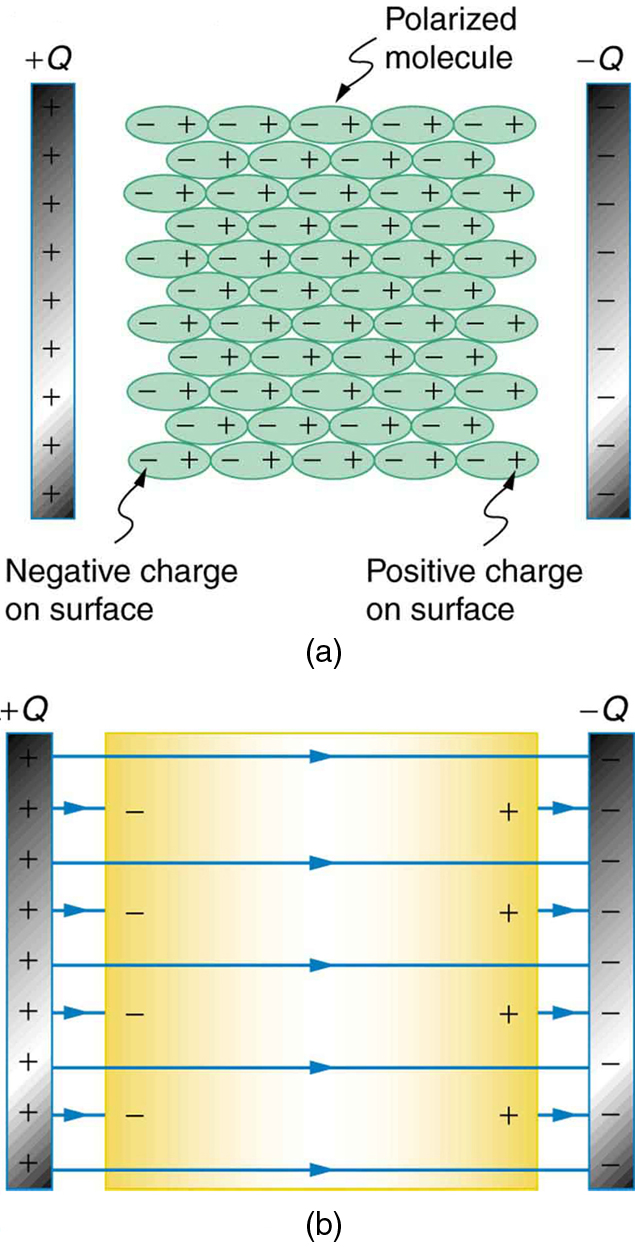| << Chapter < Page | Chapter >> Page > |
However, the limit for a 1.00 mm separation filled with Teflon is 60,000 V, since the dielectric strength of Teflon is V/m. So the same capacitor filled with Teflon has a greater capacitance and can be subjected to a much greater voltage. Using the capacitance we calculated in the above example for the air-filled parallel plate capacitor, we find that the Teflon-filled capacitor can store a maximum charge of
This is 42 times the charge of the same air-filled capacitor.
The maximum electric field strength above which an insulating material begins to break down and conduct is called its dielectric strength.
Microscopically, how does a dielectric increase capacitance? Polarization of the insulator is responsible. The more easily it is polarized, the greater its dielectric constant . Water, for example, is a polar molecule because one end of the molecule has a slight positive charge and the other end has a slight negative charge. The polarity of water causes it to have a relatively large dielectric constant of 80. The effect of polarization can be best explained in terms of the characteristics of the Coulomb force. [link] shows the separation of charge schematically in the molecules of a dielectric material placed between the charged plates of a capacitor. The Coulomb force between the closest ends of the molecules and the charge on the plates is attractive and very strong, since they are very close together. This attracts more charge onto the plates than if the space were empty and the opposite charges were a distance away.

Another way to understand how a dielectric increases capacitance is to consider its effect on the electric field inside the capacitor. [link] (b) shows the electric field lines with a dielectric in place. Since the field lines end on charges in the dielectric, there are fewer of them going from one side of the capacitor to the other. So the electric field strength is less than if there were a vacuum between the plates, even though the same charge is on the plates. The voltage between the plates is , so it too is reduced by the dielectric. Thus there is a smaller voltage for the same charge ; since , the capacitance is greater.
The dielectric constant is generally defined to be , or the ratio of the electric field in a vacuum to that in the dielectric material, and is intimately related to the polarizability of the material.

Notification Switch
Would you like to follow the 'College physics' conversation and receive update notifications?